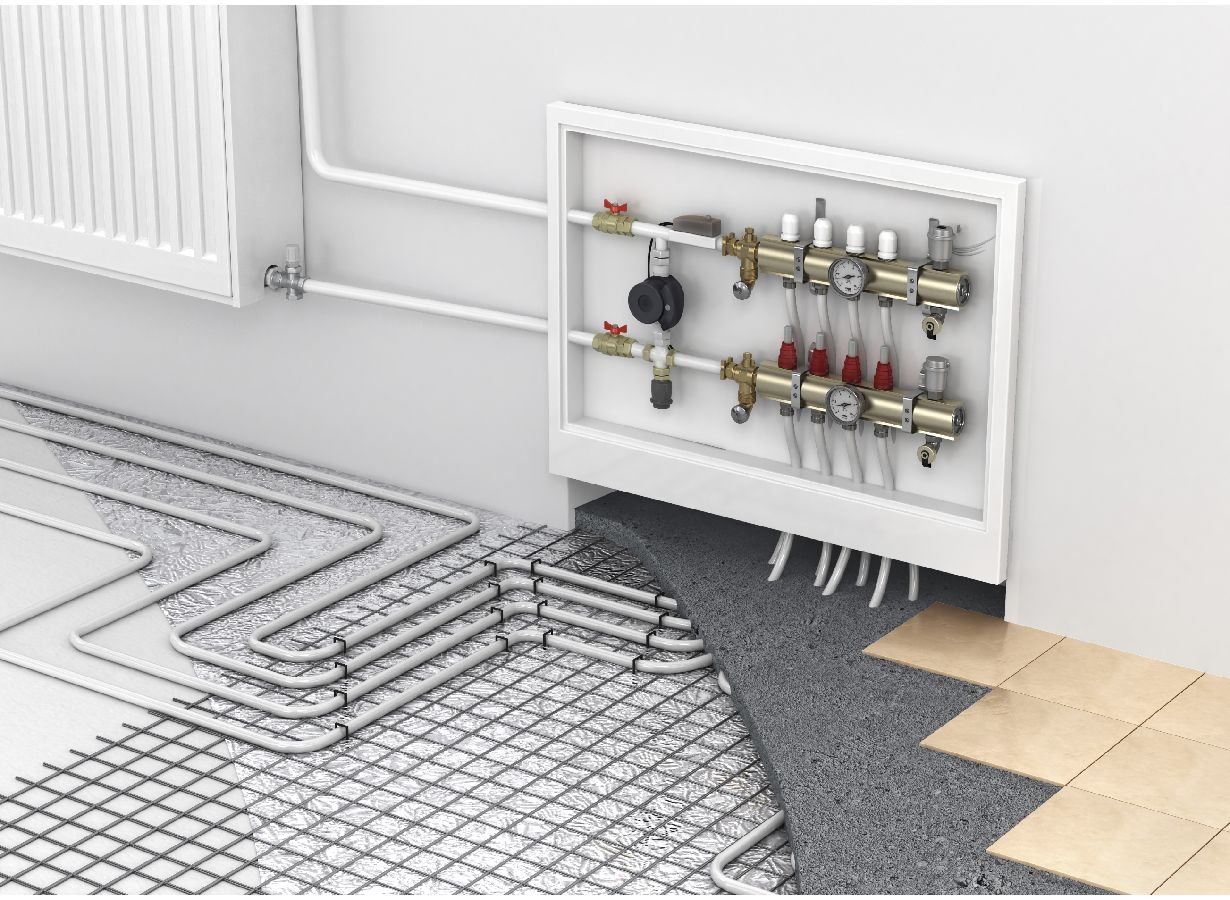Radiant Floor Heating
Radiant heating systems typically supply heat directly to the floor of a home or building. The systems depend largely on radiant heat transfer, the delivery of heat directly from the hot surface to the people and objects in the room via heat radiation, which is infrared radiation. When radiant heating is located in the floor, it is often called radiant floor heating or simply floor heating.
Radiant heating has several advantages:
- It is more efficient than baseboard heating and usually more efficient than forced-air heating because no energy is lost through ducts.
- The lack of moving air can also benefit people with severe allergies.
- Liquid-based (typically water) systems use little electricity, a benefit for homes off the power grid or in areas with high electricity prices.
- The liquid systems can also be heated with various energy sources, including standard gas or oil-fired boilers, wood-fired boilers, solar water heaters, or some combination of these heat sources.
- Furniture can be placed anywhere in the room without being concerned about blocking heat flow.
Liquid-Based Radiant Floor Heating
Liquid systems are the most popular and cost-effective radiant heating systems for heating-dominated climates. Water-based radiant floor systems pump heated water from a boiler through tubing set down in a pattern underneath the floor’s walking surface. In some systems, the temperature in each room is controlled by regulating the flow of hot water through each tubing loop. This is done by a system of zoning valves or pumps and thermostats.
The cost of installing a liquid-based radiant floor varies by the size of the home, the type of installation, the floor covering, and the layout of the house or building.

